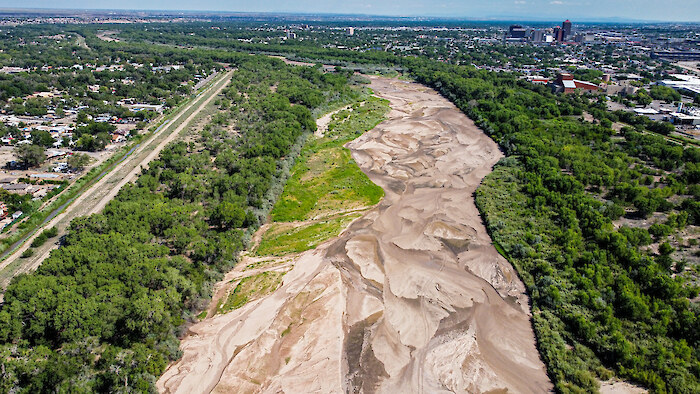
Flow alteration assesses the current flows alteration compared to the historic natural flows.
How is it scored?
The Water Management Lab at the University of California Davis completed an Upper Rio Grande Functional Flows Assessment for this indicator. The project determined the hydrologic alteration by characterizing the natural flow regime of the Rio Grande using Functional Flow Metrics and to estimate the degree of alteration when comparing these naturalized flow regime metrics with the current hydrology or that of an alternative water management strategy (scenario). Fifteen USGS gage stations were used for the analysis. Refer to Patterson & Solis et al. for the complete methods.
Hydrologic alteration was quantified at each site using the differences in naturalized and observed functional flow metrics. For each metric, observed conditions were compared against both the interdecile range (10th to 90th percentiles) and the interquartile range (25th to 75th percentiles) of naturalized conditions. The number of years that observed metrics fell into either the interdecile or interquartile range was tallied out of the 31 years total of observed conditions, and calculated as a percentage. The alteration score for the interdecile range and interquartile range are both considered in the determination of a final alteration status and report card score. The alteration scores at each site were averaged together by functional flow component using an arithmetic mean. These site-specific values were then averaged across each region of the Upper Rio Grande to create region-specific alteration scores representing each functional flow component. Finally, the scores for the regions and functional flow components are averaged together to create one overall flow alteration report card score.
